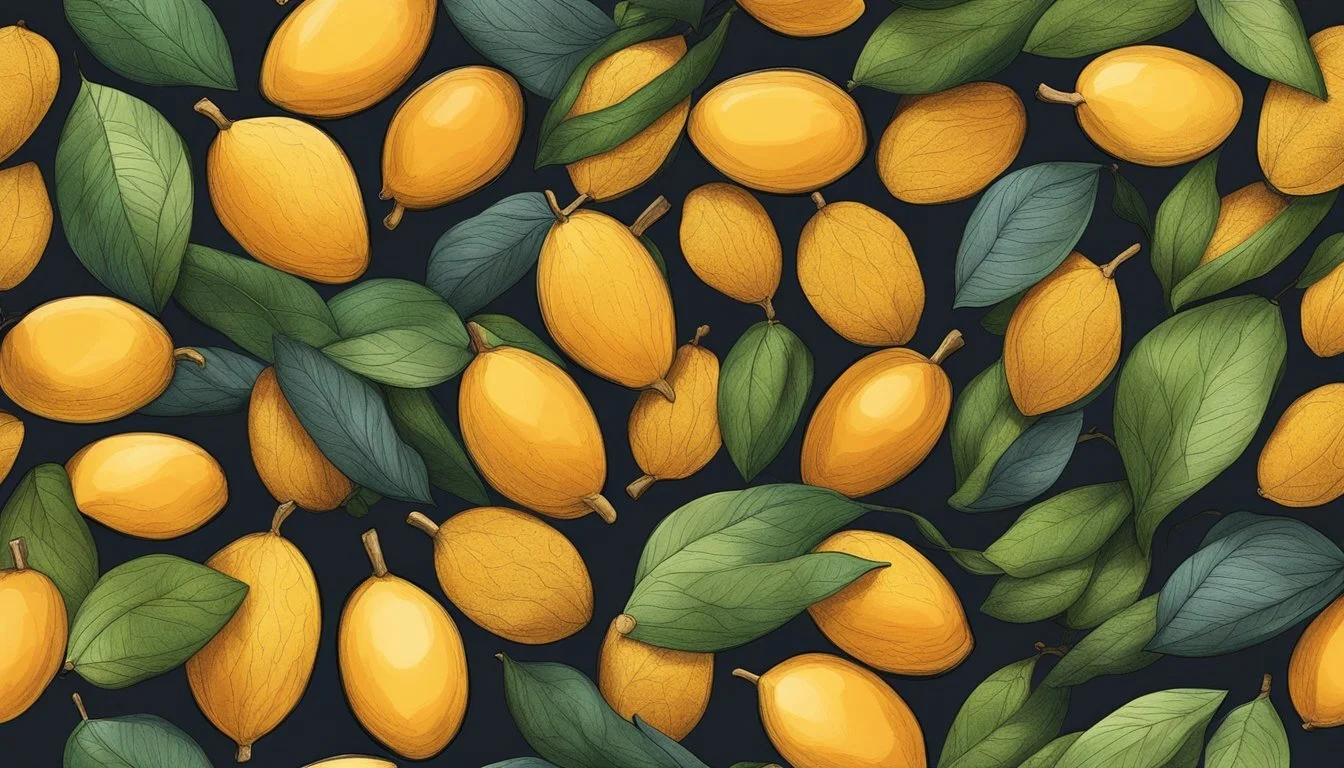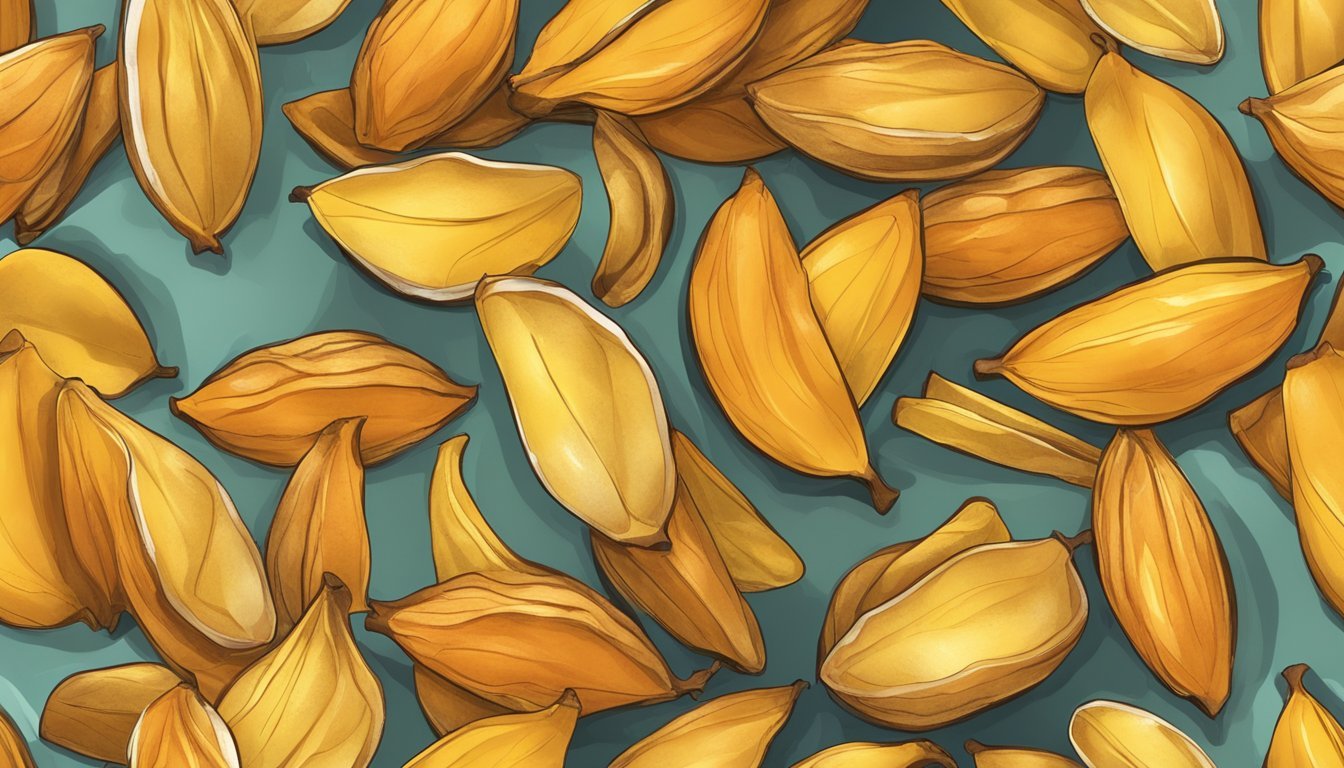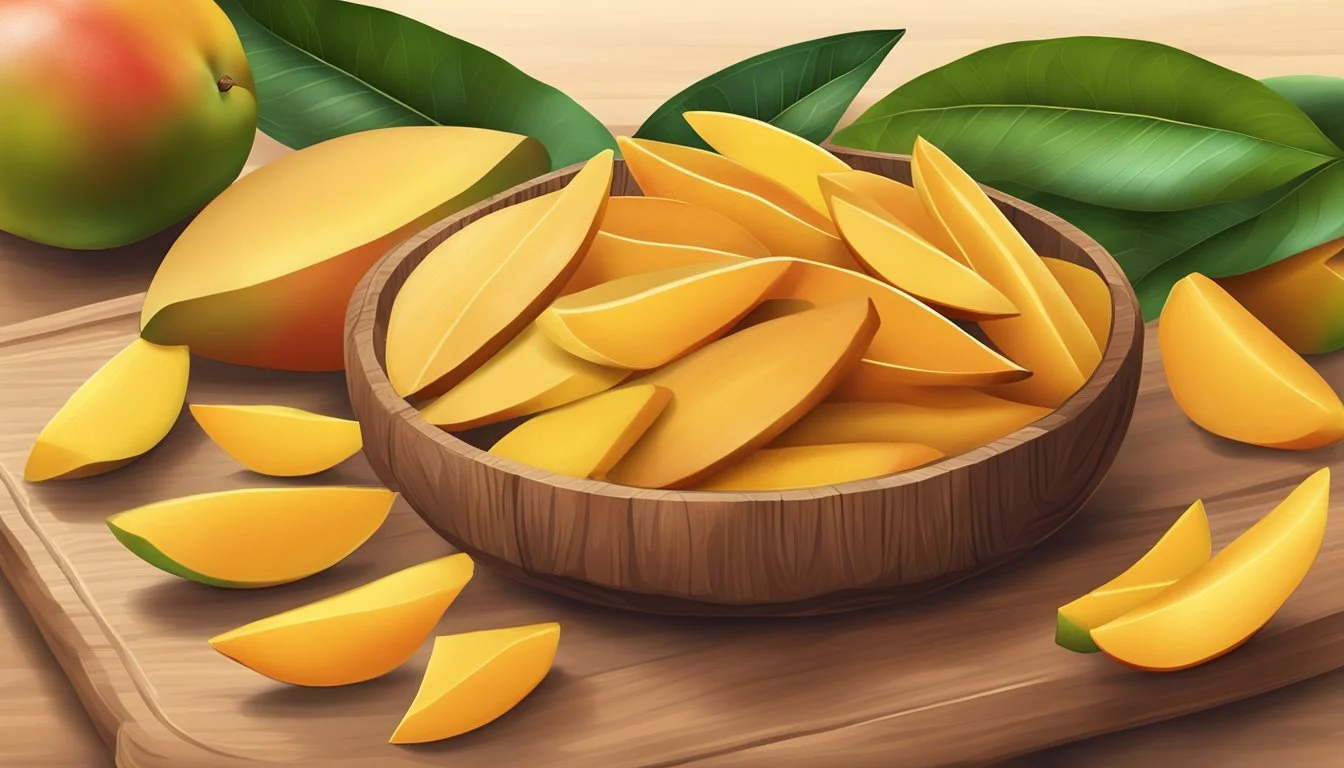How Long Does Dried Mango Last?
Shelf Life and Storage Tips
Dried mango, a popular snack and culinary ingredient, is lauded for its sweet taste and chewy texture. One of its advantages is a relatively long shelf life compared to its fresh counterpart. Under optimal storage conditions – namely in a cool, dry place – dried mango can typically last from 12 to 18 months. When opened, to extend its shelf life and maintain quality, it is often recommended to store the fruit in an airtight container or resealable heavy-duty plastic bag.
The longevity of dried mango also depends on factors such as the method of drying, packaging, and the presence of preservatives. Commercially dried mangoes, which are often packaged with preservatives, may extend the shelf life further. In contrast, mangos that are dried at home without preservatives might have a shorter shelf life ranging from 4 months to 1 year, provided they are conditioned to an appropriate moisture content.
The shelf life can be further affected by the container's seal and the environment where the mango is stored. If the container is airtight and stored in cool, dry conditions, the fruit can last up to six months. However, exposure to warm, humid conditions can significantly reduce its shelf life, potentially causing the mango to spoil more quickly. It's important for consumers to look for signs of spoilage and adhere to storage guidelines to best enjoy the dried fruit.
What Influences the Shelf Life of Dried Mango?
The shelf life of dried mango is primarily determined by several key factors, including the conditions under which it is stored, the moisture content after drying, and the type of packaging used to keep it fresh.
Storage Conditions
Proper storage is crucial for extending the shelf life of dried mango. Cool, dry areas are preferred for storage to prevent the fruit from absorbing moisture and becoming susceptible to mold. It is generally advised to store the product in an airtight container or heavy-duty plastic bag to minimize exposure to air and moisture, which can accelerate spoilage.
Ideal storage temperature: Below 21°C (70°F)
Suggested places: Pantry, dark cupboard
Moisture Content and Drying Method
Moisture content after drying is a critical factor; the lower the moisture content, the longer the dried mango can last. Traditional drying methods include using a dehydrator or an oven, with the former typically resulting in more consistent and efficient drying. The drying process must ensure that the thickness of the mango slices is uniform, as inconsistent thickness can lead to uneven drying and shorter shelf life.
Target moisture content: Around 15%
Drying methods: Dehydrator, oven
Packaging and Exposure to Air
Once dried, the packaging of mango slices can significantly impact their longevity. Airtight packaging is key to protecting the dried fruit from exposure to air and moisture, both of which can degrade the product quicker. Frequent opening and closing of the package can also allow air to enter, so resealing it tightly after each use helps in maintaining freshness.
Packaging recommendation: Airtight containers, vacuum-sealed bags
Avoid: Frequent opening, non-sealable packaging
How to Properly Store Dried Mango
Proper storage is critical to extend the shelf life of dried mango. By controlling the environment in which it is kept, one can ensure dried mango remains fresh and flavorful for as long as possible.
At Room Temperature
Pantry Storage:
Store dried mango in a cool, dry place such as a pantry or cupboard.
Place the mango in airtight containers, such as sealed jars or heavy-duty plastic bags to minimize exposure to air.
Refrigeration
Fridge Storage:
For extended freshness, dried mango can be stored in a refrigerator.
It's best to use glass jars or airtight plastic containers to protect it from moisture and odors.
Freezing
Freezer Storage:
Dried mango can be kept in the freezer to further extend its shelf life.
Ensure it's in airtight containers or freezer-safe bags to prevent freezer burn.
Label with the date to keep track of how long it has been stored.
Identifying Spoilage in Dried Mango
When assessing dried mango for spoilage, one should pay attention to any notable changes in appearance, texture, and smell, as these are strong indicators that the fruit may no longer be safe to consume.
Appearance and Texture Changes
Mold: If there are visible signs of mold, usually appearing as fuzzy spots of white, green, or black, the dried mango should be discarded immediately.
Color: A significant change in color, such as darkening beyond the normal hue, could indicate spoilage.
Texture: Dried mangoes should be leathery and chewy. A texture that is excessively hard or if the slices become sticky and moist suggests spoilage, especially if not stored properly.
Odor and Taste Alterations
Smell: A fresh, sweet aroma is characteristic of good dried mango. An off or sour smell is a clear sign of spoilage.
Taste: While tasting is not recommended if spoilage is suspected, a sour or fermented taste is an indicator that the product is no longer safe to eat.
Spoiled food can pose serious health risks, so any dried mango showing these signs of spoilage should be avoided, regardless of the expiration date.
Health and Nutritional Aspects of Dried Mango
Dried mango is a nutritious snack that offers a variety of vitamins and minerals, but it is also high in calories and carbohydrates. It should be consumed in moderation as part of a balanced diet.
Vitamins and Minerals
Dried mango is particularly rich in Vitamin A, which is crucial for maintaining healthy vision, skin, and immune function. Also, it contains a fair amount of vitamin C, although less than its fresh counterpart. This nutrient is a powerful antioxidant and plays a significant role in collagen synthesis and immune defence. Despite losing some vitamin C during the drying process, dried mango still contributes to the daily intake. Additionally, it provides certain B vitamins, including folate, which is essential for DNA synthesis and repair.
Dried mango contains a variety of minerals, though in smaller amounts, such as calcium and iron. Calcium is vital for bone health and muscle function, while iron is necessary for the transport of oxygen throughout the body.
Vitamin A: Essential for vision and skin
Vitamin C: Antioxidant; supports immune system
Folate: Important for cell division and DNA repair
Calcium: Required for bones and teeth
Iron: Critical for blood oxygenation
Calories and Carbohydrates
In terms of energy, dried mango is calorie-dense, primarily composed of carbohydrates. A third of a cup serving can contain around 160 calories, with 40 grams of carbohydrates. The bulk of these carbohydrates are sugars, which can provide a quick energy boost but should be eaten conscientiously to maintain a balanced diet.
Calories: Approximately 160 per third of a cup
Carbohydrates: Roughly 40 grams per serving, mostly as sugars
Individuals conscious of calorie intake or managing blood sugar levels should be mindful of portion sizes, as it is easy to overindulge due to the snack's sweetness and smaller volume when dried.
Enjoying Dried Mango in Various Recipes
Dried mango offers a versatile range of culinary uses, from quick snacks (What wine goes well with snacks?) to enhancing both sweet and savory dishes. With its vibrant flavor and extended shelf life, dried mango is a valued addition to myriad recipes, contributing both nutrition and taste.
Snacks and Convenience Foods
Dried mango is a perfect healthy snack on its own but also excels when added to various snack mixes and convenience foods. It can be easily included in the following ways:
Trail Mix: Combine with nuts, seeds, and other dried fruits for a portable, energy-dense snack.
Granola Bars: Chop dried mangoes and add them into homemade granola bar recipes for a chewy texture and a burst of tangy sweetness.
Yogurt Toppings: Sprinkle on top of yogurt to enhance its flavor profile.
One can also add a sprinkle of tajin—a popular chili-lime seasoning—to dried mango slices for a snack with an extra kick.
Sweet and Savory Dishes
Incorporating dried mango into sweet and savory dishes adds a unique flavor dimension and can complement a variety of recipes:
Cookies and Muffins: Introduce chopped dried mango to batter for an exotic twist to conventional baked goods.
Fruit Salads: Rehydrate dried mango slices and mix with other fresh fruits for an enhanced fruit salad experience.
For savory dishes, one might add finely chopped dried mango to rice dishes or curries, where the fruit's sweetness balances out spicier notes. When using ripe mangoes, one can dehydrate cut mango pieces themselves to ensure peak sweetness and appropriate dryness levels for recipes.
Frequently Asked Questions
How long does dried mango last? Dried mango, when stored properly, can last for 6-12 months in the refrigerator, 12-18 months in the freezer, or 4-12 months in a pantry if kept in a cool, dry place.
What is the best way to store dried mango for maximum freshness? For best quality, store dried mango in airtight containers or vacuum-sealed bags to prevent exposure to moisture and other contaminants. Place them in a cool, dry, and dark area, away from direct sunlight.
Can you refrigerate dried mango? Yes, refrigerating dried mango in an airtight container can extend its shelf life.
What about slicing and peeling fresh mangoes for drying at home? To make sun-dried mango or to dehydrate mangos at home, start by peeling the fresh mangoes, removing the pit, and cutting them into even slices. This ensures consistent drying.
Are all varieties of mangos suitable for drying? Most mango varieties are suitable for drying, but some may yield better taste and texture. It’s best to use ripe, but not overripe, mangos for drying to achieve the right balance of flavor and convenience.
How can you tell if dried mango has gone bad? Signs of spoilage include discoloration, off smell, mold, or unusual texture. If any of these signs are present, it’s advisable to discard the dried mango.








